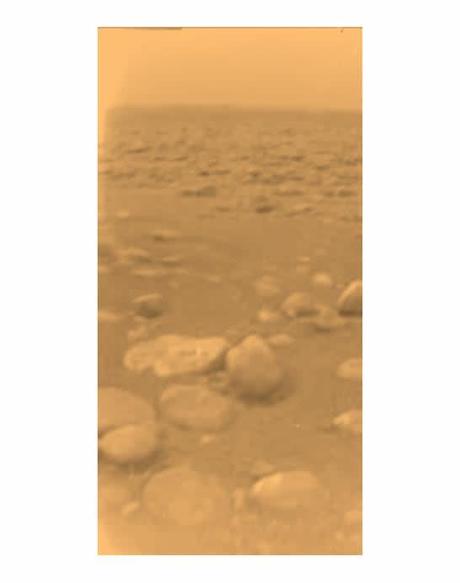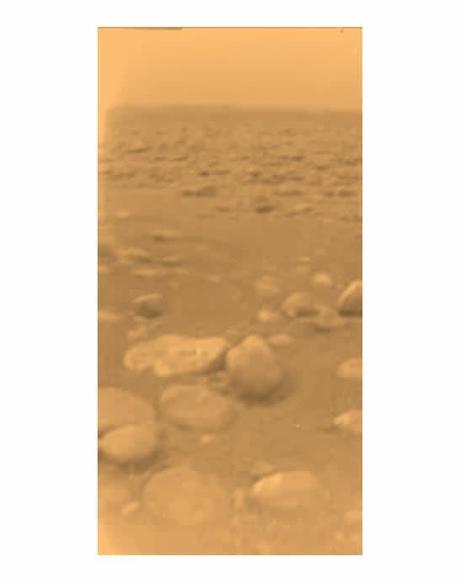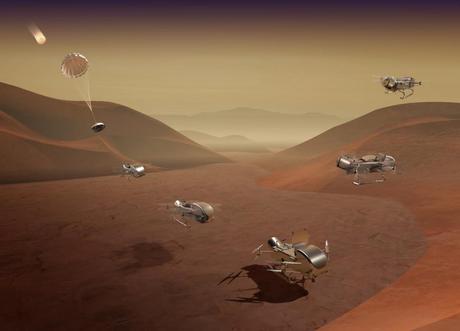"Are we alone?" It's the age-old question about life in the universe, one that astrobiologists and astronomers around the world are trying to answer.
Although Earth is the only planet in our solar system with an abundance of life, astronomers and space agencies are looking in our own backyard for signs that we are not alone. And many believe the best places to look are the icy moons around two of the largest planets, Jupiter and Saturn.
Currently, there are seven bodies in the outer Solar System that are believed to have oceans beneath their crust: two of Saturn's moons, Titan and Enceladus; three moons of Jupiter, Europa, Ganymede and Callisto; one of Neptune's moons, Triton; and finally Pluto.
They may have water, but do they have the chemical ingredients to create and sustain life?
LOOK | Ocean worlds: the search for lifeRecently, a study published in the journal Astrobiology focused on the possibility of life on Titan, Saturn's largest moon.
The research aimed to answer the question: If something collides with Titan, melting an impact crater, could surface organics reach the ocean where they could support life?
Unfortunately the answer was no.
"We found that even in the most optimistic scenario, we could figure that the amount of organic matter that ends up down there is quite small," said Catherine Neish, lead author of the study and professor of earth sciences at Western University.
'So small that life would be very difficult to sustain over time, or in a slightly more optimistic scenario, maybe it is there, but it is so minimal that we need better tools to detect such a very detect low activity levels.
"So it's not the thriving biosphere I think we were hoping for."
However, that doesn't necessarily mean the search for life on other icy moons - or even Titan - is dead.
Shannon MacKenzie, a planetary scientist at Johns Hopkins University, said she believes it was a very good study. However, she notes that there is a lot about Titan that we simply don't know.
The story continues
"It's really difficult to do these kinds of studies because we don't know what's on Titan's surface in the first place," she said. "So you have to make an assumption about what kind of organics are mixing in that impact melt. The lab-based or analogs that we've studied well here on Earth are just that: they're analogs. They're our best guess at what's going on the surface is."
Another problem for astrobiologists is that they don't know how long Titan has had a thick atmosphere that transports organic matter to the surface.
Other moons, other chances to find lifeWhile Neish is skeptical about underground life on icy moons, she doesn't completely rule it out on Titan.
"On Earth, we don't just see life spread evenly across the ocean: it's in these kinds of microhabitats that maybe congregate near the ocean floor... It's not just spread evenly. And so I'm hopeful that maybe the Organics on Titan are not evenly distributed throughout the ocean, perhaps they remain trapped near the ice-ocean interface."
There's also the possibility that something is happening beneath the surface, hundreds of miles beneath the ice, that could keep this going. She said there will be an article discussing that prospect.
And of course, there are other places in the solar system that are good candidates, including two of the most talked about places: Enceladus and Europa.
Missions to moonsIn 2005, the European Space Agency's Huygens spacecraft (part of the joint NASA-ESA Cassini-Huygens mission) gave us the first glimpse of what lay beneath Titan's thick, orange-yellow atmosphere-and it was a surprise. As it descended, it conquered large quantities of lakes - later confirmed to be composed of hydrocarbons - and, once on the ground, smooth pebbles.
That was the only mission to the surface of another moon. And while the data collected was invaluable, it was limited.


This image was returned on January 14, 2005 by ESA's Huygens probe during its successful descent to Titan. The surface with pebble-sized objects is darker than originally expected and consists of a mixture of water and hydrocarbon ice. There is also evidence of erosion at the base of these features, indicating possible river activity. (ESA/NASA/JPL/University of Arizona)
But that's going to change.
NASA plans to send a helicopter mission - called Dragonfly - that will fly around Titan and collect critical information that will help astronomers and astrobiologists further study the moon and its composition (Neish is Dragonfly's astrobiology lead, and MacKenzie also makes part of the team).
Both scientists are eagerly awaiting the launch, which will take place sometime in 2028.
"We're going to really understand with Dragonfly how organic chemistry can evolve in these other environments in the solar system to gain a better understanding of what happened on our own planet before life took over and rewrote chemistry and chemical history" , says MacKenzie. said.


The Dragonfly helicopter lander, shown here in an artist's rendering of the mission concept, will land on Saturn's moon Titan and then make multiple flights to explore various locations as this characterizes the habitability of the ocean world. (NASA/Johns Hopkins APL/Steve Gribben)
And in October, the Europa Clipper will be launched to its namesake moon, which orbits Jupiter. Together with Saturn's moon Enceladus, it is considered a promising place to look for life: it spews particles into space from cracks in the surface ice.
MacKenzie said she is excited about the upcoming mission and that with so many unique moons in our solar system, there are plenty of places to look for life.
"We have these different flavors of ocean worlds at our disposal, and I think that's why we need a whole fleet of missions to explore them all, because they're different," she said.
